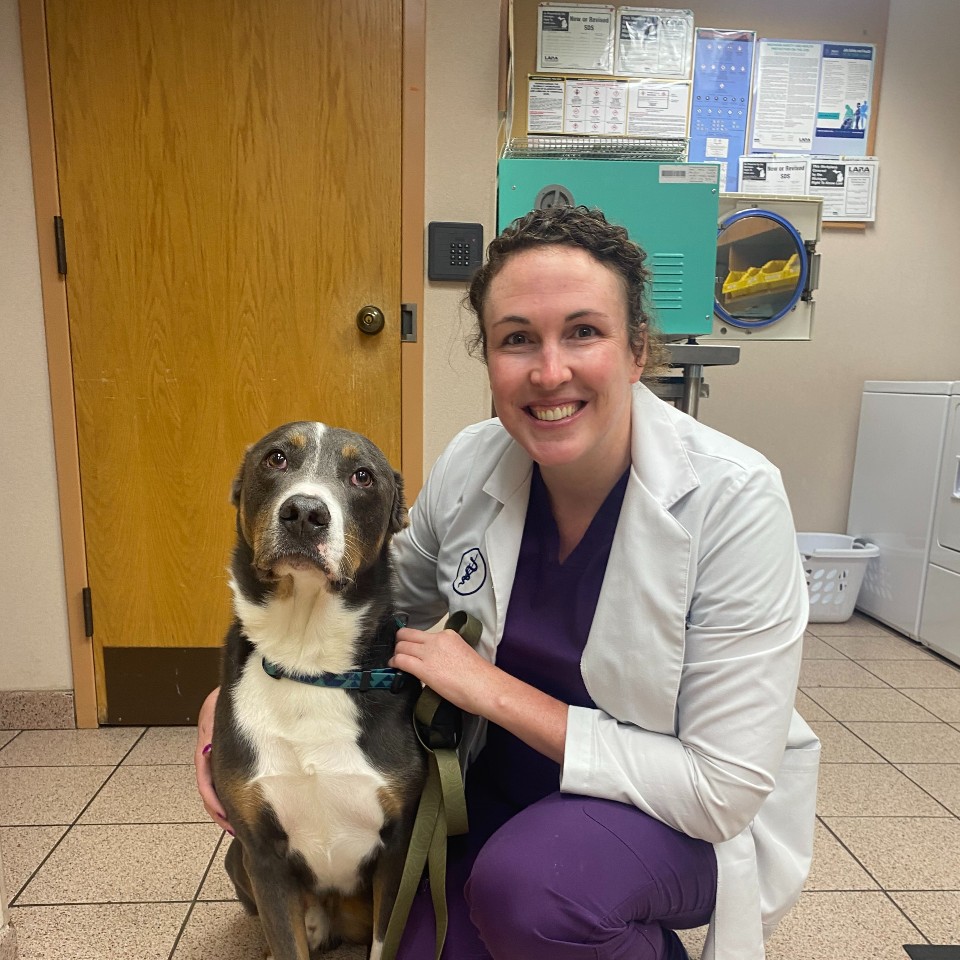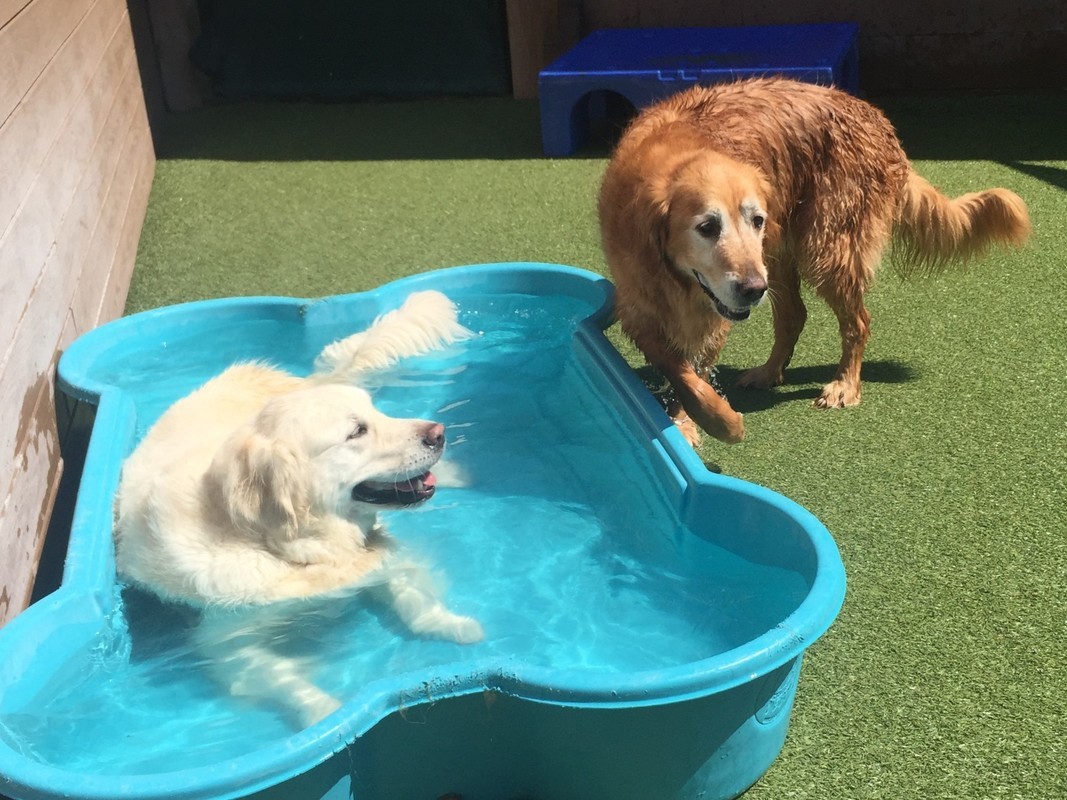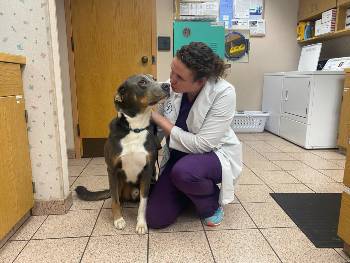
Dog Days: Cool tips for avoiding the heat this summer
At times, the heat of a West Michigan summer day can be overwhelming—and when it’s too much for us, it’s important to remember that it’s also too much for our dogs! Dr. Becky Schaffer shared some insights and advice for getting the most out of summer while keeping your dog safe and comfortable.
Watch for the signs Sometimes a jump in the pool is just what the veterinarian ordered!
Sometimes a jump in the pool is just what the veterinarian ordered!
Keeping a close eye on your dog on a hot day is important, especially if they’re spending a lot of time outdoors. When they start to exhibit signs of what’s known as heat exhaustion, it’s time to get them to a cool place and take steps to help them recover. “Dogs that are getting heat exhausted are panting super heavily,” said Dr. Schaffer. “Often, if they’re outside they seek shade and lie down, taking a break from whatever they’re doing. So if you notice a dog withdrawing or being a lot less social that can be a really good indicator that they need to cool down and they need water.”
Catching and treating heat exhaustion quickly is very important. “Heat exhaustion can rapidly progress to heat stroke,” she added. “That’s when we’ll start to see the dog collapse, true breathing issues, severe diarrhea, seizures, and multiple systems malfunctioning.” While milder heat exhaustion can be treated at home with access to plenty of fresh water, spraying the dog with lukewarm water, or blowing a fan on them, heat stroke usually requires veterinary intervention to help the dog recover.
“It’s a little bit of a spectrum. If a dog is overheated, a lot of times we can treat that by removing them from heat, cooling them with water and just giving them a break,” said Dr. Schaffer. “But if their core body temperature gets above 104° or 105°, that is when we really start seeing severe side effects and they need veterinary care not only to get cooled down, but also to provide support as their body adjusts to that excessive heat.” She stresses that it’s important to take immediate steps at the first sign of heat stroke. “If you are concerned your dog has heat stroke, please bring it to the vet right away, as this can cause life-threatening problems.”
Hot paw problems Dr. Schaffer steals a kiss from Leo.
Dr. Schaffer steals a kiss from Leo.
It’s no secret to dog owners that their pets sometimes hide their discomfort. This can be especially true on a hot day during a walk on a blacktop surface. During your daily walks, Dr. Schaffer says, be mindful of your dog’s feet.
“Anytime the temperature is over 75 and it’s sunny out, I tend to get concerned about the heat of the blacktop,” she said. “I’ve seen many dogs run and they don’t even realize it’s harming them but they end up with blisters or their paw pads end up coming off. They might not even limp until they have an open sore usually. So it can be really hard to know when they've gone too far.”
That’s why prevention is key. “I try to encourage people, if you’re going to take your dog for a walk or run, consider walking around in your bare feet on the blacktop to see how it feels. If it’s too hot, have them walk or run on the grass. If they are really reluctant to do that, you can wet their paw pads down periodically. Booties are another option that will keep their paw pads safe from the blacktop.”
Car safety
Taking your dog on the road is a part of life; whether they enjoy the trip or not, they sometimes have to ride along. It’s important, though, to make sure that the car is a comfortable, safe place, even when it’s parked. During the summer, it is incredibly dangerous to leave your dog alone in a car, even for short periods. “The rate of temperature increase in a closed car is so incredibly rapid,” said Dr. Schaffer. “There have been a lot of studies on the topic, and the most recent report I read said that within a half an hour, even if it’s only 70° outside, if the car is completely closed the temperature inside will rise to over 90°, and of course it only gets hotter from there. Surfaces in the car that are in direct sunlight, such as the dashboard, can get up to as high as 120° and that of course quickly puts the pet in danger.”
Cracking the windows doesn’t help much either. “Just a small window crack doesn’t really allow for a whole lot of ventilation. So leaving a dog in a car even with the windows fully open, could still not be enough. I tell people, if it’s over 70°, don’t ever leave your dog in the car without the air conditioning running.”



